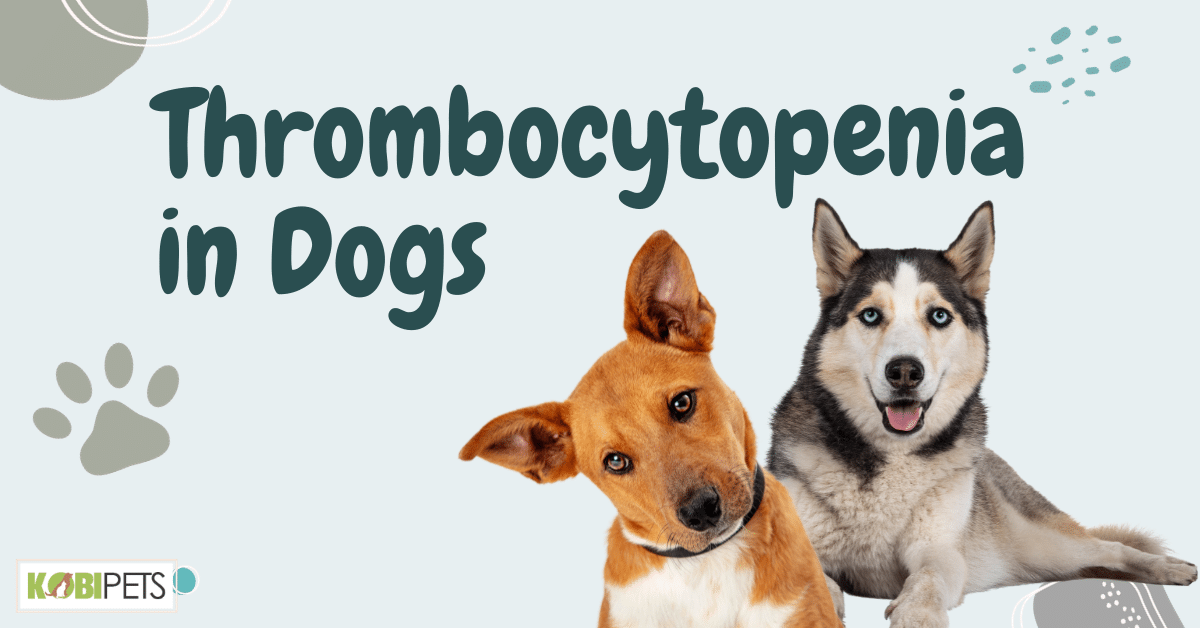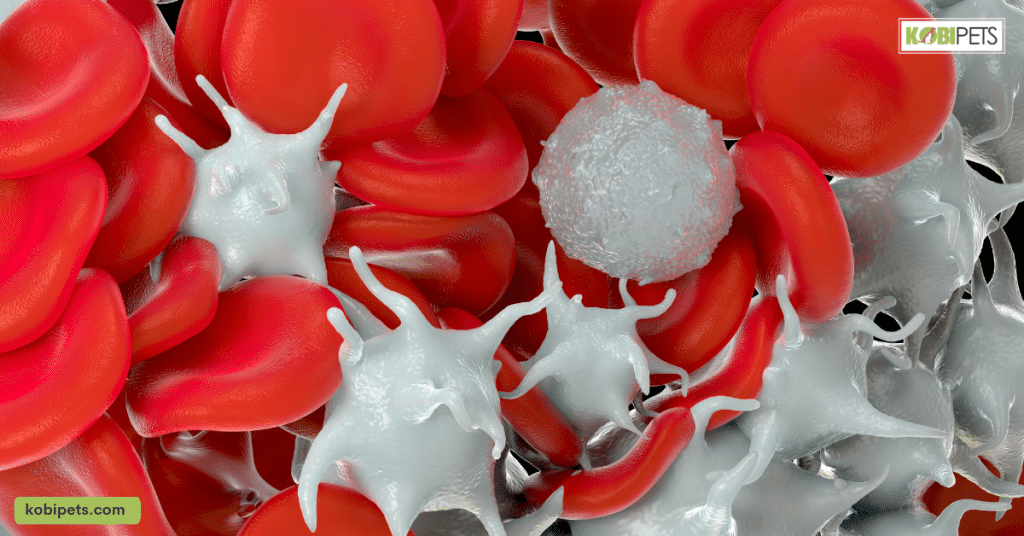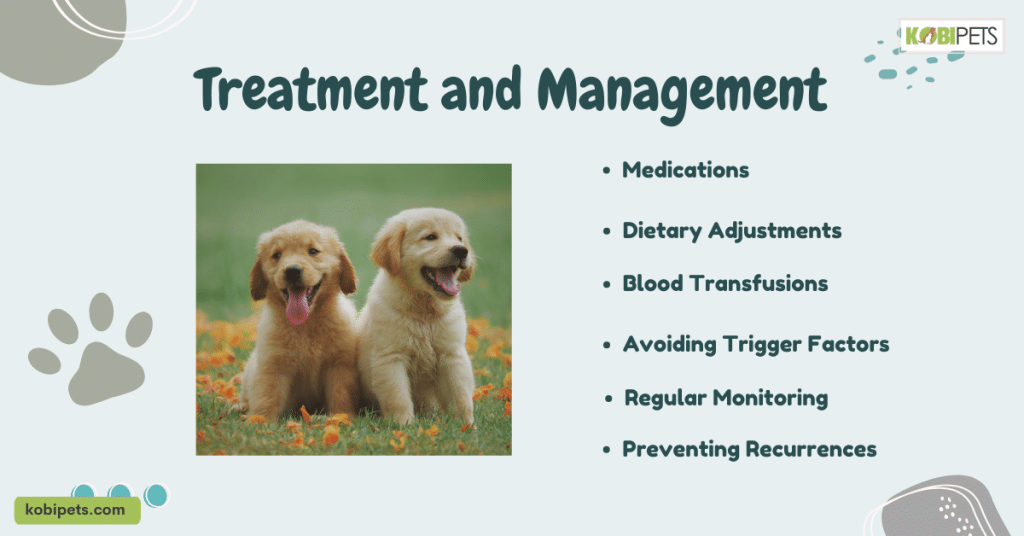
Thrombocytopenia in dogs refers to a decreased number of platelets in the blood, crucial for clotting and preventing excessive bleeding. Common symptoms include spontaneous bruising, prolonged bleeding, and blood in urine or stool. Early diagnosis and treatment are essential to manage this condition effectively and prevent complications.
Thrombocytopenia is a condition where dogs have a low platelet count in their blood. Understanding it is vital for dog owners because platelets are crucial for clotting and preventing bleeding. In this article, we’ll explore thrombocytopenia in dogs, its importance, and how to manage it for your pet’s well-being.
Understanding Platelets and Their Role
Let’s start by getting to know platelets up close and personal. These tiny powerhouses, also known as thrombocytes, are minuscule cell fragments coursing through your dog’s bloodstream. Produced in the bone marrow, they are the unsung champions of hemostasis, ensuring your dog’s body can effectively halt bleeding when necessary.
Size doesn’t matter when it comes to the importance of platelets. These diminutive wonders act as the rapid-response team in your dog’s bloodstream, rushing to the scene of injuries to kickstart the clotting process. Without an ample supply of functional platelets, your dog becomes vulnerable to a range of bleeding disorders.
Platelets possess an extraordinary skill set, including adhesion to injured blood vessels and aggregation at the site of damage. They form a plug that staunches bleeding and releases key substances that trigger the coagulation cascade, ultimately creating a stable blood clot. This intricate process is indispensable for wound healing and preventing life-threatening hemorrhages.

Causes of Thrombocytopenia in Dogs
Thrombocytopenia, a condition marked by a low platelet count in dogs, can be a source of concern for pet owners. To effectively address this condition, it’s essential to grasp its underlying causes. In this section, we’ll embark on a comprehensive exploration of the various factors that can lead to thrombocytopenia in dogs, providing insights into what triggers this critical health issue.
Primary and Secondary Causes
Thrombocytopenia can manifest in two primary forms – primary and secondary. In primary thrombocytopenia, there’s a direct issue with platelet production or destruction, independent of other health conditions. Secondary thrombocytopenia, on the other hand, is often a consequence of underlying health problems, such as infections, immune disorders, or cancer. Understanding these distinctions is crucial in determining the most effective treatment and management strategies.

Diseases and Medications
Several diseases and medications can be significant contributors to thrombocytopenia in dogs. Diseases like tick-borne illnesses, viral infections, and bone marrow disorders can directly affect platelet production or function. Additionally, certain medications, such as some antibiotics or chemotherapy drugs, may lead to a drop in platelet count as a side effect.

Immunological Factors
The immune system plays a pivotal role in maintaining platelet levels in the body. In cases of immune-mediated thrombocytopenia (IMT), the immune system mistakenly identifies platelets as foreign invaders and targets them for destruction. This autoimmune response can result in a significant decrease in platelet count.
Understanding the myriad causes of thrombocytopenia is paramount on the path to safeguarding your dog’s health. This knowledge equips pet owners and veterinarians alike with the information needed for early detection and diagnosis, enabling effective intervention.

Symptoms and Diagnosis
Recognizing the signs and symptoms of thrombocytopenia in your dog is the first step toward timely intervention and effective management. In this section, we’ll provide a comprehensive overview of the key symptoms that may indicate your canine companion is grappling with this condition. We’ll also delve into the critical aspect of early detection and the diagnostic methods veterinarians employ to confirm and assess thrombocytopenia.
| Symptoms of Thrombocytopenia in Dogs | Importance of Early Detection | Diagnostic Tools and Tests |
|---|---|---|
| – Unexplained bruising | – Timely intervention is vital | – Complete blood count (CBC) |
| – Prolonged bleeding from minor wounds | – Prevents complications | – Platelet count assessment |
| – Blood in urine or stool | – Enhances treatment efficacy | – Bone marrow aspiration |
| – Bleeding gums | – Improves overall prognosis | – Blood smear analysis |
| – Nosebleeds | – Minimizes potential risks | – Coagulation profile |
| – Petechiae (tiny red spots on skin) | – Provides peace of mind | – Ruling out underlying causes |
Being vigilant about the symptoms of thrombocytopenia and seeking prompt veterinary care can make all the difference in your dog’s health and recovery. By understanding these signs and ensuring early detection through the diagnostic methods discussed, you can take proactive steps to address this condition and provide your furry friend with the best possible care.

Treatment and Management
In this section, we will provide an overview of the various treatment options available to dog owners and veterinarians. We’ll also emphasize the importance of prompt treatment to prevent severe complications and discuss long-term management strategies to ensure your furry companion’s well-being.

Treatment and Management
- Medications: Your veterinarian may prescribe medications like corticosteroids or immunosuppressants to regulate the immune system and increase platelet production.
- Dietary Adjustments: A balanced diet rich in essential nutrients can support your dog’s overall health and potentially aid in platelet recovery.
- Blood Transfusions: In severe cases or emergencies, a blood transfusion may be necessary to provide immediate platelet support.
- Avoiding Trigger Factors: Identifying and avoiding factors that exacerbate thrombocytopenia, such as certain medications or infections, is crucial.
- Regular Monitoring: Close monitoring of platelet levels through follow-up visits to the vet ensures the effectiveness of treatment and early detection of any relapses.
- Preventing Recurrences: Discuss preventive measures with your veterinarian, including lifestyle changes or medications, to reduce the likelihood of thrombocytopenia returning.
Thrombocytopenia in dogs can be managed and, in many cases, effectively treated with the right approach. By understanding the treatment options available, promptly seeking veterinary care, and implementing long-term management strategies, you can provide your furry friend with the best chance for a healthy and happy life.
Conclusion
Thrombocytopenia is a common condition in dogs that can have severe consequences if left untreated. By understanding its causes, symptoms, and treatment options, dog owners can take proactive steps to safeguard their pet’s health. Regular monitoring and prompt intervention are essential to managing this condition effectively and ensuring your furry companion lives a long and healthy life. So, stay informed, stay vigilant, and give your dog the best chance at a happy and healthy life.






